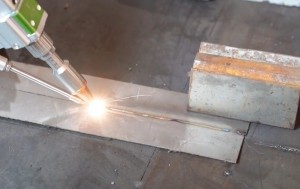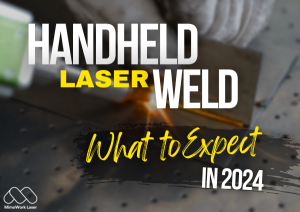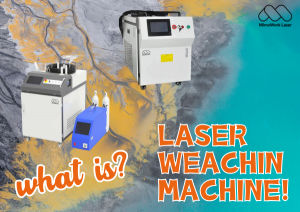Introduction
What is Laser Welding Pen?
A laser welding pen is a portable laser welding device that utilizes pulsed laser technology.
It is designed for small-scale, high-precision welding tasks, ideal for repairing delicate components or micro-welding applications due to its compact size and flexibility.
Advantages
Core Technical Highlights
Ultra-Precise Welding
Ultimate Precision: Pulsed laser control with adjustable focus diameter, enabling micron-level weld seams.
Welding Depth: Supports penetration depths up to 1.5 mm, adaptable to diverse material thicknesses.
Low Heat Input Technology: Minimizes the Heat-Affected Zone (HAZ), reducing component distortion and preserving material integrity.
Stable and Efficient Performance
Consistency: Repeat positioning accuracy is high, ensuring uniform and reliable welds for mass production.
Integrated Shielding Gas: Built-in gas supply prevents oxidation, enhancing weld strength and aesthetics.
Design Advantages
Flexibility and Portability
Mobile Operation: Equipped with 5–10 meters of original optical fiber, enabling outdoor and long-distance welding, breaking workspace limitations.
Adaptive Structure: Handheld design with movable pulleys for quick angle/position adjustments, suitable for confined spaces and curved surfaces.
High-Efficiency Production
Multi-Process Support: Seamless switching between overlap welding, butt welding, vertical welding, etc.
User-Friendly Operation
Laser welding pen can be used immediately, no training necessary.
Weld Quality Assurance
High-Strength Welds: Controlled molten pool depth ensures weld strength ≥ base material, free from pores or slag inclusions.
Flawless Finish: No blackening or marks; smooth surfaces eliminate post-weld grinding, ideal for high-end applications.
Anti-Deformation: Low heat input + rapid cooling technology minimizes distortion risks for thin sheets and precision components.
Want To Know More About Laser Welding?
Start a Conversation Now!
Typical Applications
Precision Manufacturing: Electronics, medical devices, aerospace components.
Large-Scale Structures: Automotive bodies, ship decks, hybrid material pipelines.
On-Site Repairs: Bridge steel structures, petrochemical equipment maintenance.

Laser Welding Work
Technical Details of The Welding Process
The pen welder operates in the pulsed deep welding process, requiring no filler material and a technical zero gap (joining gap ≤10% of material thickness, max 0.15-0.2 mm).
During welding, the laser beam melts the metal and creates a vapor-filled keyhole, allowing molten metal to flow around it and solidify, forming a narrow, deep weld seam with uniform structure and high strength.
The process is efficient, fast, and minimizes distortion or start-up colors, enabling welding of previously unweldable materials.
Related Videos
Related Videos
Our video will demonstrate how to operate the software for our handheld laser welder, designed to enhance efficiency and effectiveness.
We'll cover setup steps, user functions, and settings adjustments for optimal results, catering to both beginners and experienced welders.
Recommend Machines
FAQs
The pen welder is suitable for titanium, stainless steel, standard steel, and aluminum.
To ensure laser safety, customers must appropriately brief employees, require the wearing of special protective equipment such as laser safety goggles, gloves, and cabins, and establish a dedicated laser safety area.
Related Articles
Post time: Apr-18-2025






